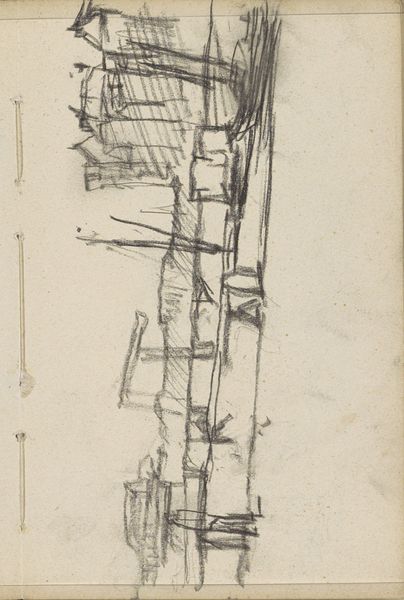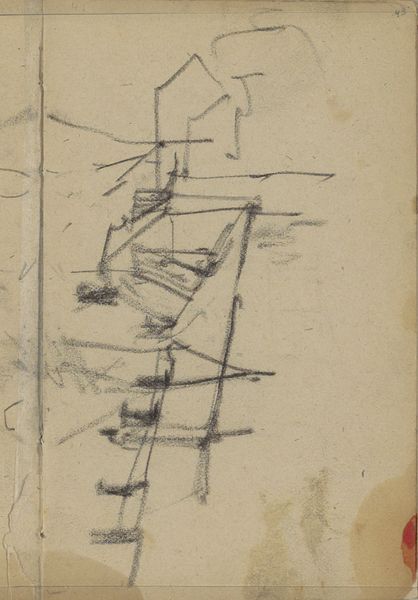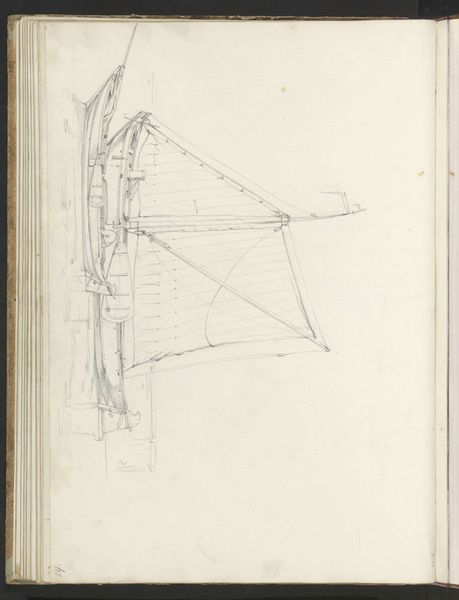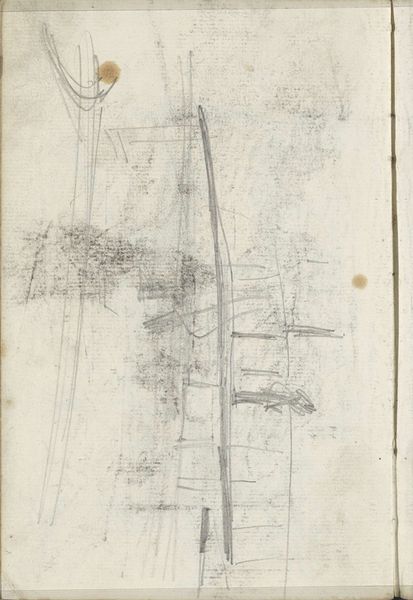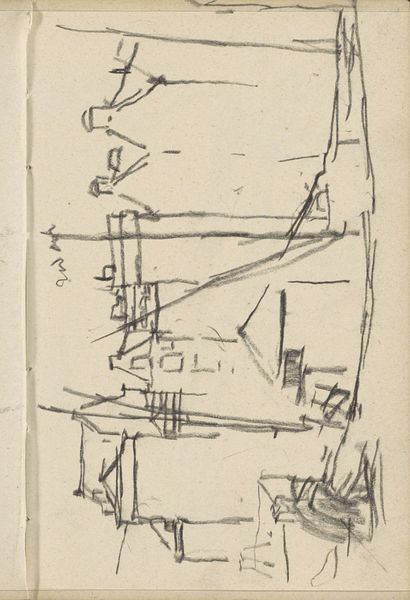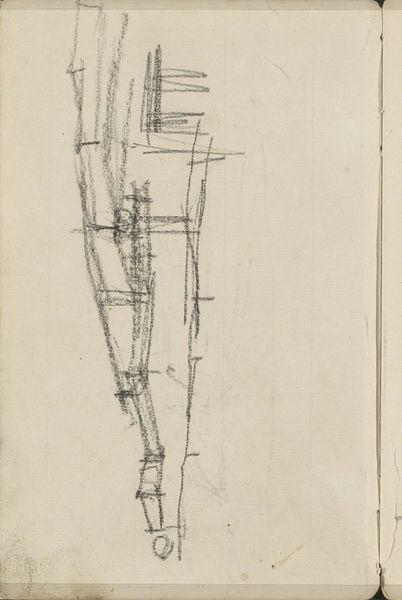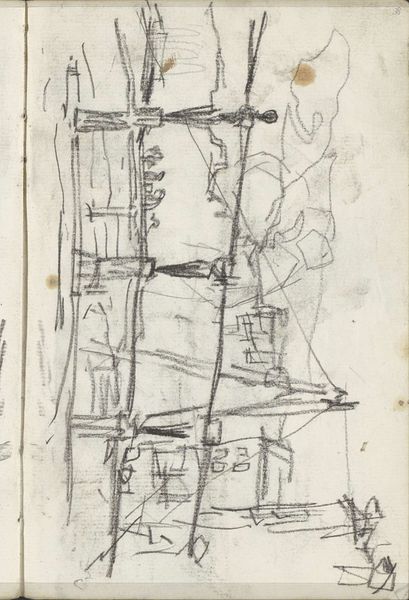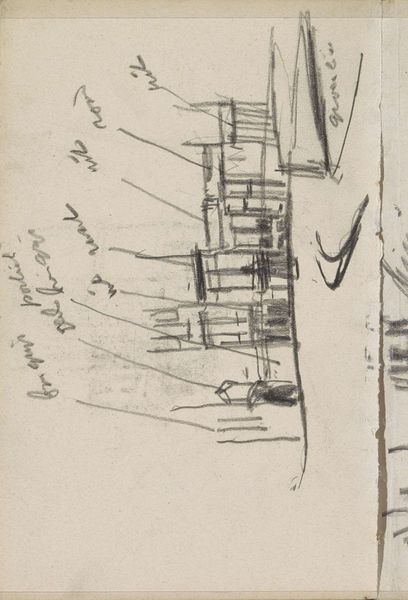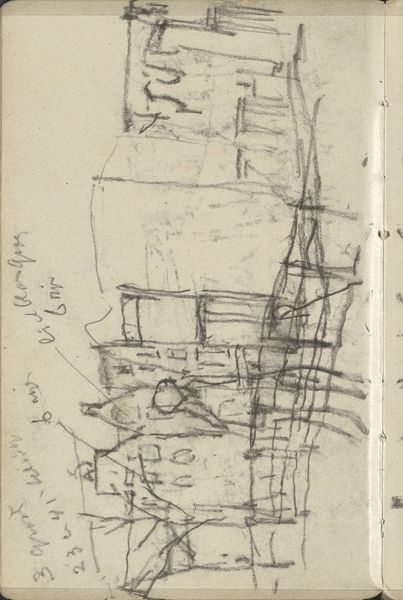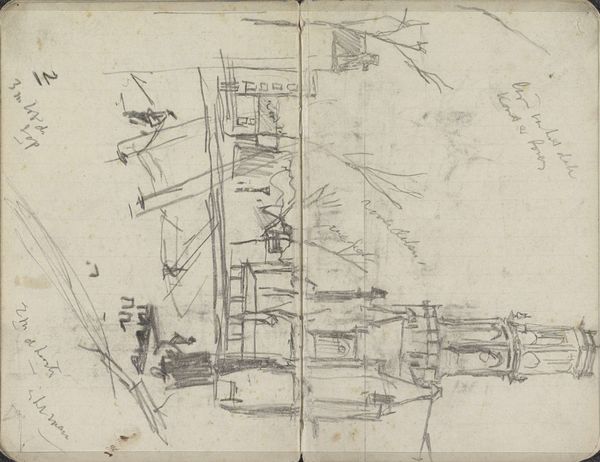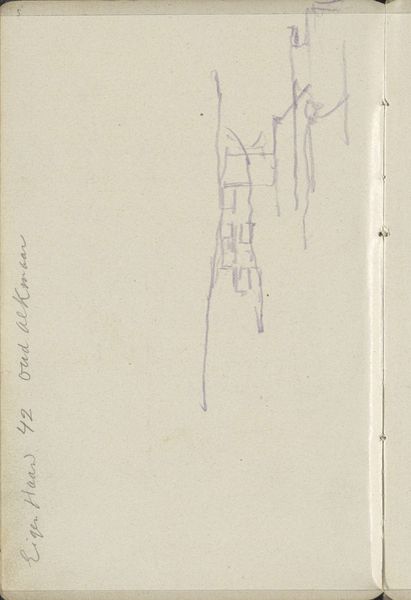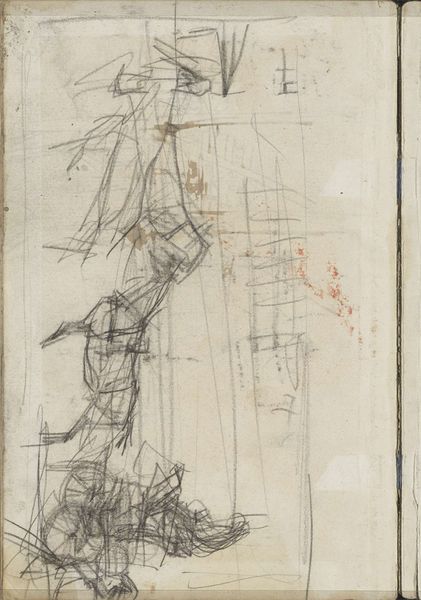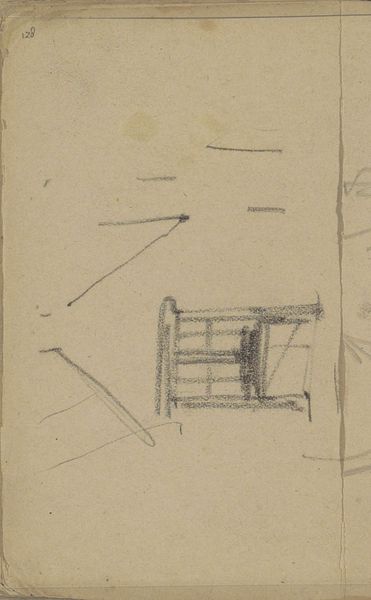
Copyright: Rijks Museum: Open Domain
Editor: Here we have "Stelling, mogelijk een heistelling," which translates to "Scaffolding, possibly a pile driver," by George Hendrik Breitner, created sometime between 1886 and 1923. It's a graphite and pencil drawing. What strikes me is its raw, almost chaotic energy. What do you see in this piece? Curator: I see a direct link to the rapid industrialization of Amsterdam at the turn of the century, something Breitner captured often. The sketch's roughness isn't just stylistic; it reflects the city’s messy, unglamorous transformation. This wasn't about pretty landscapes; it was about the sheer force of progress. Consider the social impact - did this construction displace people? How did it change the cityscape for the working class? Editor: So, the incompleteness adds to that sense of disruption? It feels very immediate, like a fleeting moment captured. Curator: Precisely. It wasn't intended as a finished piece, but as a visual note. Think about how Breitner was choosing to depict *this*, instead of the established, picturesque views favored by the art market at the time. What statement was he making by focusing on this urban grit? Also, what purpose did art serve at this time? Editor: It's almost like he's saying, "This is Amsterdam, this is its reality, and it's worth our attention." Were there other artists doing similar work? Curator: Yes, certainly. Think of the Realists, like Courbet, who challenged academic painting by depicting everyday life. But Breitner adds a Dutch spin. Also how the museum exhibits Breitner work tells its own story about whose narrative of Amsterdam it wishes to promote and represent. What narratives get sidelined, or disappear? Editor: That makes me look at it very differently now. I was focused on the aesthetics, but seeing it as a commentary on social and urban change makes it far more compelling. Curator: Exactly. It encourages us to think critically about what art represents and whose stories are told, and also whose narratives go untold by figures such as Breitner in a quickly changing Amsterdam.
Comments
No comments
Be the first to comment and join the conversation on the ultimate creative platform.
